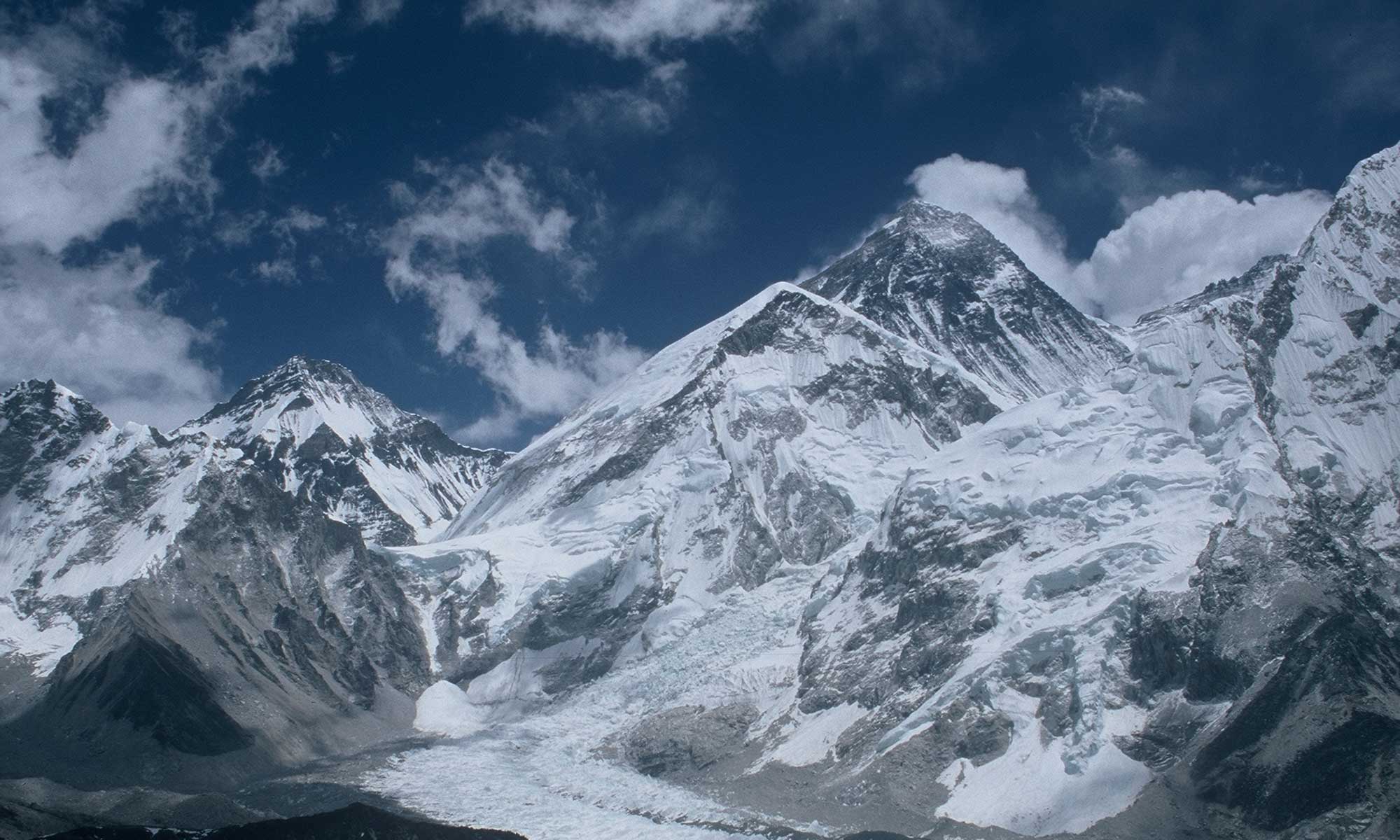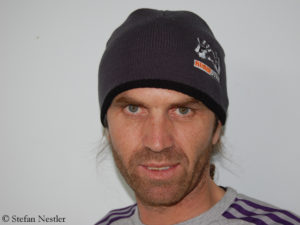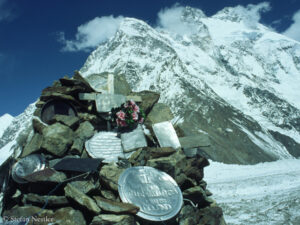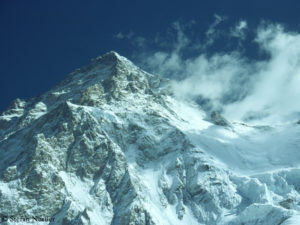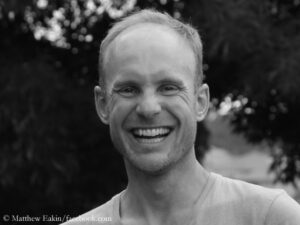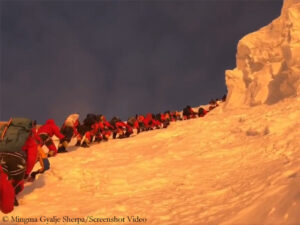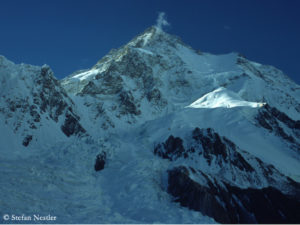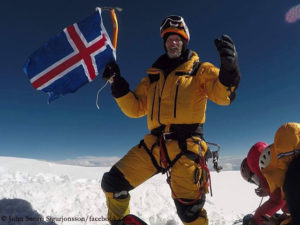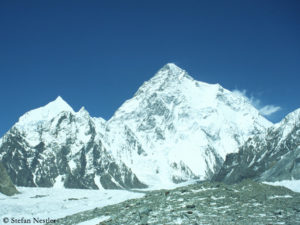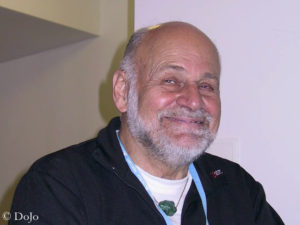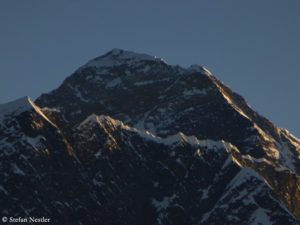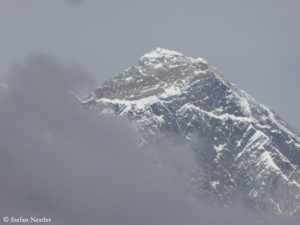When Thomas Huber talks about freedom in the mountains, his eyes light up. “Mountains are so much more than just a name, an ascent or a record,” the older of the two Huber brothers tells me. “Mountains give you the opportunity to find something very special. Within yourself. Your inner freedom.” Thomas is now 57 years old. After losing his hunting dog Cerro, who was run over last winter, he decided to give up expeditions this year. Instead, he concentrated on training his new dog Torre – and returning to his mountaineering roots: extreme climbing.
Continue reading “Thomas Huber: “I don’t need an eight-thousander””Muhammad Hassan’s death on K2: Report renounces for blame
Could Muhammad Hassan still be alive today? The report of the commission of inquiry answers this question only indirectly: Yes, the father of three small children could still be alive if he had not been on K2, the second highest mountain in the world, located in Pakistan, on that 27 July. Because he simply didn’t belong there.
It was Hassan’s first eight-thousander expedition, according to the report of the five-member commission appointed by the regional government of Gilgit-Baltistan province after the death of the High Altitude Porter. Before that, Muhammad had only worked as a “Low Altitude Porter” on K2 (8,611 meters) and Spantik (7,027 meters), i.e. he had carried material to the base camps but not up the mountains.
Continue reading “Muhammad Hassan’s death on K2: Report renounces for blame”Willi Steindl on the lack of a rescue operation for Muhammad Hassan on K2: “You just have to want it”
The death of the Pakistani High Altitude Porter Muhammad Hassan at the end of July in the upper zone of K2 is causing discussions all over the world. Two questions in particular are of concern even to people who have little or no interest in mountaineering. How could dozens of mountaineers simply climb over Hassan on the second highest mountain on earth, although he was obviously still alive? Why did no one try to bring him down from the accident site above the so-called “Bottleneck” – an extremely steep passage at 8.200 meters, directly below huge overhanging seracs?
The Austrian Wilhelm Steindl helped initiate the discussion. He was part of the team of expedition operator Furtenbach Adventures that turned back below the Bottleneck because of too much avalanche danger. Steindl and German cameraman Philip Flämig later viewed video footage Flämig had shot with a drone. They saw on it that Hassan was apparently still alive hours after his accident, while numerous climbers walked past or climbed over him.
Steindl and Flämig visited Hassan’s family after the end of the expedition and delivered money they had collected to the surviving dependents. Steindl has since launched a crowdfunding campaign on the Internet (click here) to help the family of the deceased porter financially in the future as well.
Steindl runs a hotel in Kirchberg in the Austrian state of Tyrol. He raced cars until he was 18. “Then my racing career failed because there were no sponsors,” Willi tells me. I talked to the Austrian climber, who turns 31 this Saturday, about the summit day on K2.
Willi, how did you personally experience the situation in the summit zone of K2 on 27 July?
Continue reading “Willi Steindl on the lack of a rescue operation for Muhammad Hassan on K2: “You just have to want it””Climbing over corpses for the summit?
The pictures and videos that have been circulating in social media for days about the summit day on K2 are disturbing. In them, mountaineers can be seen climbing over the corpse of Pakistani climber Muhammad Hassan below the “Bottleneck,” the key passage at around 8,000 meters.
There are so many questions surrounding his death that the regional government of Pakistan’s Gilgit-Baltistan province has set up a commission of inquiry. Within two weeks, it is to clarify what happened on 27 July in the summit zone of the second highest mountain on earth. What exactly happened to Hassan? Was everything done to save his life? Was he adequately equipped for his work as a High Altitude Porter? Should he even have been up there based on his mountaineering skills?
Continue reading “Climbing over corpses for the summit?”Last friendship service for Matthew Eakin
Not only was he a mountain enthusiast, but he had exceptional charisma. “Anyone who had the pleasure to spend even a few minutes with Matthew Eakin would no doubt come away with a renewed zest for life. A guy that constantly gave his time to others,” Australian adventure photographer and cameraman Rob Norman wrote of his friend Eakin after the 41-year-old fell to his death on 25 July while descending K2. “He lived the life he wanted, wore his heart on his sleeve, made the most out of this precious life we have and always did it with a smile his face.” Similarly, Cassie Davies, also a friend of Eakin’s, wrote: “He was a magnet that attracted people to him. He encouraged many of us to try things, just to dare, to put the investment in and make our dreams real.”
Continue reading “Last friendship service for Matthew Eakin”Denis Urubko: On his birthday without breathing mask on top of K2
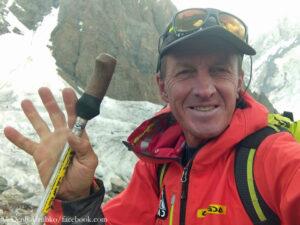
The unstoppable. According to Denis Urubko, he stood on the 8,611-meter-high summit of K2 this morning, at 7:30 a.m. local time in Pakistan. In doing so, he gave himself the best present on his 49th birthday. As with all his many previous ascents, Denis climbed without bottled oxygen on the second highest mountain on earth. “I was alone above Camp 4,” Urubko let it be known via Facebook.
Within ten days, the climber, who was born in the Russian North Caucasus, thus reached three eight-thousand-meter peaks – in a rush via the normal routes, without breathing mask, without a companion. First Urubko scaled Broad Peak (8,051 meters) on 19 July, then Gasherbrum II (8.034 meters) on 25 July, and now K2.
Continue reading “Denis Urubko: On his birthday without breathing mask on top of K2”Traffic jam in the K2 summit zone
Lucky! Damn good luck! This is the impression given by a video posted on social media by Mingma Gyalje Sherpa from 22 July, the record summit day on K2 (see below). On it, a long line of climbers can be seen at the so-called “Bottleneck” – above them huge ice towers that could collapse at any time. On Friday last week, some 120 members of commercial teams had reached (with bottled oxygen, except for a few) the summit of the second-highest mountain on earth – more than ever before in a single day in the history of K2.
Continue reading “Traffic jam in the K2 summit zone”Summit wave and first fatality on K2
It seems almost surreal: Everest conditions on K2. After the first ascent of the second highest mountain in northern Pakistan on 31 July 1954 by the Italians Achille Compagnoni and Lino Lacedelli, it took 40 years to reach the mark of 100 ascents. Today, Friday, according to reports from Pakistan, around 100 climbers are said to have reached the summit of K2 at 8,611 meters – in a single day!
On Thursday, a five-member Sherpa team – Pasdawa Sherpa, Chhiring Namgyal Sherpa (both from the operator 8K Expeditions) and Siddhi Ghising, Dorjee Gyelzen Sherpa and Rinji Sherpa (from Madison Mountaineering) – had fixed the ropes up to the highest point, achieving the first summit successes on K2 this summer. They used bottled oxygen. So did the vast majority of members of commercial teams who summited today – among them Kristin Harila of Norway (eight-thousander number eight for her this year) and Samina Baig as the first woman from Pakistan.
Continue reading “Summit wave and first fatality on K2”Sigurjonsson’s family asks the climbers on K2
Actually, it should go without saying. But what is self-evident in times when, for some, the only thing that seems to matter on the mountain is making it into the headlines? It is not only the truth that tends to fall by the wayside, but also empathy. The family of Icelandic climber John Snorri Sigurjonsson, who died on K2 in the winter of 2021, has asked summit aspirants this summer season to show reverence and not to film or photograph John’s body.
The body of the Icelander is still lying in the summit area, above the so-called “Bottleneck”, the avalanche-prone key section of the normal route at around 8,400 meters – latched into the fixed rope. That the request of Sigurjonsson’s family is not superfluous is proven by the countless pictures circulating on the Internet of the corpses of climbers who have died on Mount Everest, for example.
Continue reading “Sigurjonsson’s family asks the climbers on K2”Expedition hotspot K2
Will K2 become a bestseller like Mount Everest? No, I don’t have to formulate that as a question anymore. The 8,611-meter-high mountain on the border between Pakistan and China is already a big seller among commercial expedition operators. Karrar Haidri, head of the Alpine Club of Pakistan, told the Pakistani newspaper “The News” that this summer more than 400 climbers would attempt to climb the second highest mountain on earth. By comparison, Nepal’s government issued 325 climbing permits for the past spring season on Everest, compared with 408 in the record year of 2021.
Continue reading “Expedition hotspot K2”Mountaineering legend Kurt Diemberger celebrates his 90th birthday
In summer 2004, the same problem befell us. On the journey to K2, the second highest mountain on earth in Pakistan, both mountaineering legend Kurt Diemberger and I contracted diarrhea that put us out of action for two days. As we later discovered in conversation, we had both eaten eggs in a hotel in the town of Chilas on the Karakoram Highway that were past their prime. With rather wobbly legs, we set off as planned to trek across the Baltoro Glacier.
At the time, Kurt was accompanying a large Italian expedition as guest of honor, which had set itself the goal of another ascent of the mountain on the 50th anniversary of the first ascent of K2 by the Italians Achille Compagnoni and Lino Lacedelli – five climbers of the team later succeeded in reaching the summit, all without the use of bottled oxygen. I was on a reporting trip to K2 because of the anniversary, which Kurt described to me as his “dream and destiny mountain.”
Continue reading “Mountaineering legend Kurt Diemberger celebrates his 90th birthday”Winter expeditions: Down – and over?
This Monday marks the end of the meteorological winter. All attempts to reach an eight-thousander summit in this cold season were unsuccessful. On Mount Everest, Jost Kobusch returned to the valley today after spending three days and nights at almost 6,500 meters.
“The weather forecast predicted higher speeds at the last minute, which would have made a climb too much of an unnecessary risk,” Jost writes on Facebook. “After all, the route remains technical. And believe me, it was definitely exciting enough to climb down the hard ice backwards and in the dark at high wind speeds.”
The 29-year-old German climber had already declared when setting out on his last ascent that he no longer saw a realistic chance of reaching the summit at 8,849 meters. In the best case, he could perhaps reach higher than during his first attempt two years ago, Jost had said. In 2020, he had reached the West Shoulder of Everest at just below 7,400 meters. But nothing came of it now, the strong wind did not abate. “It was really stormy and maybe a touch worse than I had hoped,” Kobusch summed up his expedition: “But at the end of the day, I learned a lot and am very grateful for the experience.”
Continue reading “Winter expeditions: Down – and over?”Jost Kobusch on Mount Everest: As high as possible – Waiting for summit chance on K2
It is the last ascent in his second solo winter attempt on Mount Everest. In view of the continuing strong winds, Jost Kobusch knows that – as two years ago – he will not reach the summit of the highest mountain on earth at 8,849 meters. He is aware that “the chance of reaching the summit is practically non-existent,” the 29-year-old German climber let it be known on social networks. “The only remaining hope is that I will get higher than last time, see more and gain experience. Maybe I’ll even beat my own record!”
Continue reading “Jost Kobusch on Mount Everest: As high as possible – Waiting for summit chance on K2”Gelje Sherpa’s team abandons summit attempt on Cho Oyu
At 7,560 meters on the Southeast ridge of Cho Oyu was the end of the line. Due to announced gusts of up to 100 kilometers per hour in the upper zone of the eight-thousander, the ten-member Nepalese team led by Gelje Sherpa abandoned its summit attempt – “because the (weather) window was too short to get going,” as Ashok Rai, manager of the expedition, told the Internet portal “Everest Chronicle”: “There will be a second attempt once the weather improves.”
Continue reading “Gelje Sherpa’s team abandons summit attempt on Cho Oyu”Tough struggle for the winter expeditions on Everest, Cho Oyu and K2
What is still possible this winter for climbers on the eight-thousanders? After the expeditions on Nanga Parbat in Pakistan and on Manaslu ended unsuccessfully, only the attempts on K2 in the Karakoram in Pakistan and on the Himalayan giants Cho Oyu and Mount Everest in Nepal are still running.
Jost Kobusch currently has plenty of time to read during his solo attempt on Everest. “My favourite book at the moment: Positive Psychology for Dummies,” writes the 29-year-old German climber from Lobuche in the Everest Valley. “With the current conditions here, I really need this book!” In it, two English psychologists give tips on how to deal with difficult feelings and make your life happier and healthier.
Continue reading “Tough struggle for the winter expeditions on Everest, Cho Oyu and K2”